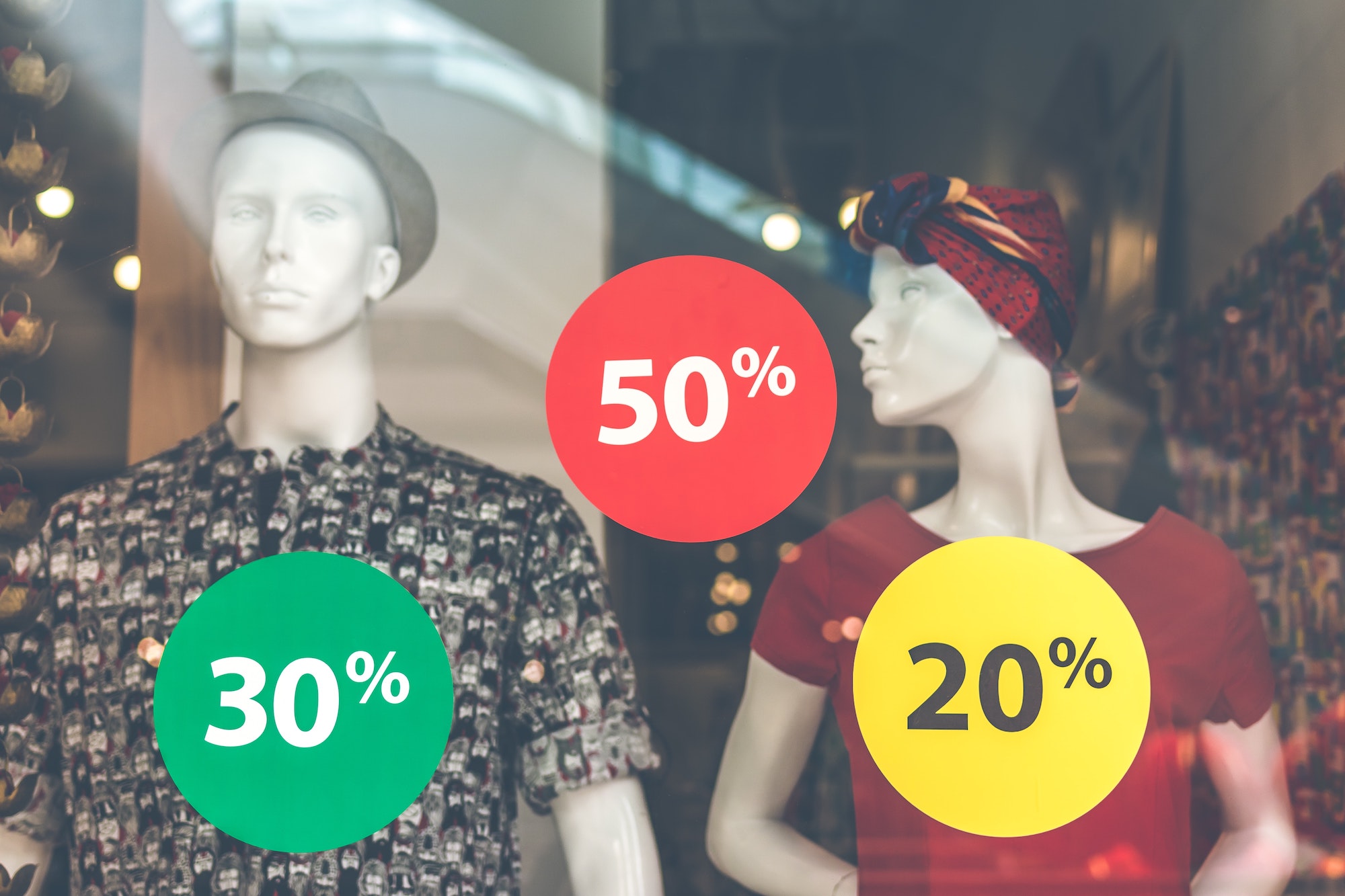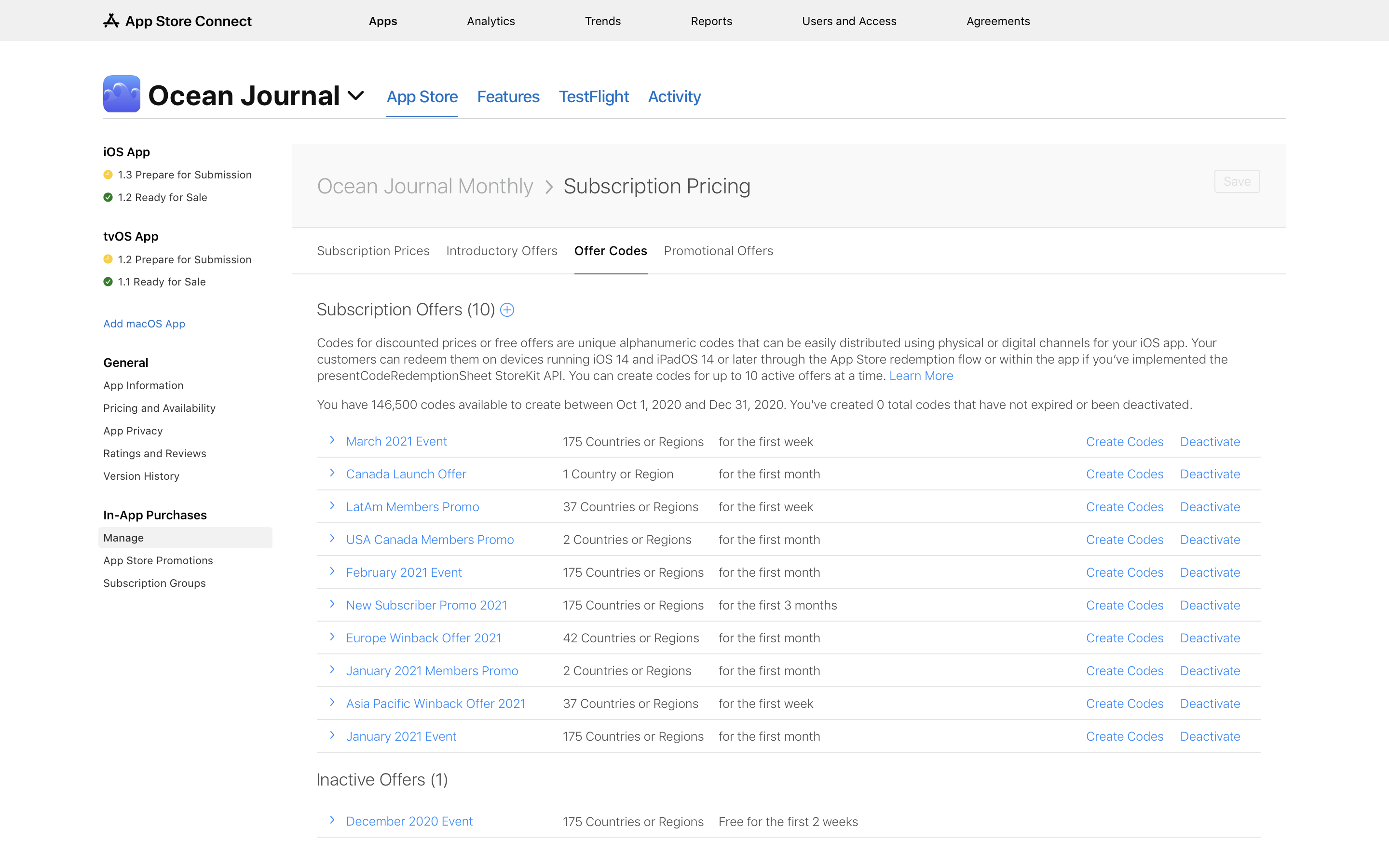
Well, that isn’t the only good news out of Cupertino for media companies. On Tuesday, Apple made a little-noticed announcement that app publishers could now offer special offers via discount codes.
You can now create subscription offer codes to acquire, retain, and win back subscribers. Offer codes are unique, alphanumeric codes that provide auto-renewable subscriptions at a discounted price or for free for a specific duration. Provide your one-time use codes digitally or offline at physical events, alongside products, and more. Users on iOS 14 and iPadOS 14 and later can redeem offer codes on the App Store through a one-time code redemption URL, or within your app if you’ve implemented the
presentCodeRedemptionSheetAPI. Sales and Trends reports will be updated later this year to include information on the performance of your subscription offer codes.
That might not seem like a big deal, but it helps address one of publishers’ most common complaints about the App Store: that its pricing wasn’t flexible enough for an industry that’s found targeted discounting essential to a successful digital subscription strategy.
For example, just from clicking around various links on Twitter, I found all of these live subscription pitches from The Washington Post:
Each with its own marketing copy and target audience. Could I tell you how, exactly, the Post determines that you get the 4-weeks-for-$1 offer while you get the 12-weeks-for-$1 offer? Nope. But the Post has its reasons, which could be the result of deep data crunching or just an A/B test. Either way, the success of each individual offer will be tracked and used to optimize the Post’s overall subscription strategy. Maybe one offer does well with TikTok users, another is a hit with working moms, and another does well with college grads living in Sun Belt suburbs.
Similarly, if you spend any time on The Wall Street Journal’s website, you are generating a propensity-to-subscribe score, based on your activity: the articles you’ve read, the frequency of your visits, whether you’ve signed up for a newsletter, and dozens of other signals. The Journal uses that number to move its paywall around — give you fewer or more or different free articles — and to figure out what sort of offer to show you whenever you do finally hit it.Publishers have found this level of customer intel useful because digital news subscriptions are competing with the endless stream of free news online. With zero-cost competitors always a click away, getting someone to hand over their credit card number can be a big lift. The Post, the Journal, and other papers can have those kinds of personalized offers because they have some level of control over their subscription backends — and the capacity to gather and analyze the behavioral data that informs them.
The same hasn’t been true in Apple’s App Store. When in-app subscriptions debuted in 2011, pricing was one-size-fits-all. It wasn’t until 2017 that publishers could offer introductory pricing to lure new subscribers. In 2019, it added promotional pricing that could be offered to existing or former subscribers. But targeting pricing to individual customers is limited with those options. And what little targeting is available is tied to bare-bones in-app behavior (like whether someone has canceled their subscription).That changes with these new offer codes. An in-app subscription can have up to 10 different offers active at any one time — each with its own price point and duration. (Try one year for $29! Try 4 weeks for $1! Subscribe for $1 a month! Try 12 weeks for $1!) They can be limited by country. At the end of the introductory period, they can then be charged the normal full rate or some other price. Here’s an example of what it looks like from the developer’s perspective:

That’s all great — but the real gain is that now publishers can target these offers however they want, online or off. A newspaper could, for example, make distinct offers to:
…ad infinitum. There really is no limit on how narrow you can get. (You are limited to 10 offers per subscription at any one time — but that limit is for the number of distinct pricing/duration levels you can set. You can target and distribute those 10 offers in an infinite number of ways. An app can generate 150,000 unique offer codes each calendar quarter.) And they can be distributed either as traditional offer codes (of the “enter JUSTCANCELEDPRINT at checkout” variety) or embedded in a URL, like the one in the “GET THIS OFFER NOW” button at the bottom of a marketing email. Apple also says it will give you data to track each offer’s performance.
Let’s be real: There are a lot of publishers who will have neither the data capacity nor a large-enough addressable audience for this sort of targeting to make a meaningful difference in subscriptions. Last week’s rev-share cut mostly helps smaller publishers; offer codes mostly help bigger ones. But this nonetheless means that, however sophisticated your subscription logic can be on yournewssite.com, it can be just as sophisticated in your iPhone or iPad app. That’s another win for publishers.
In-app subscriptions have always been a no-brainer for games, productivity apps, and other apps that exist only within Apple’s ecosystem. Publishers have been a harder sell, since the lion’s share of their subscriptions (print or digital) come from outside the App Store.
Nearly all news publishers have become more invested in digital subscription revenue in recent years. Apple, meanwhile, has also put more energy into subscriptions, which make up a big share of the services revenue that the company has been focused on growing the past couple of years. If that correlation means Apple will keep addressing publisher complaints and making the iPhone a more hospitable place for publishers, I don’t think they’ll hear many complaints.